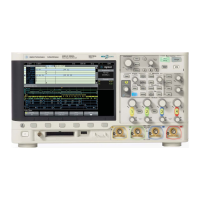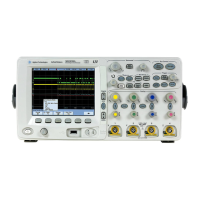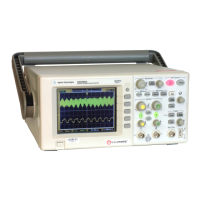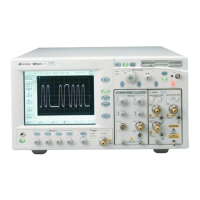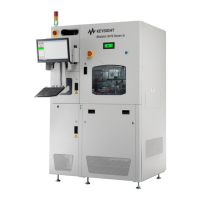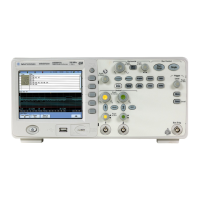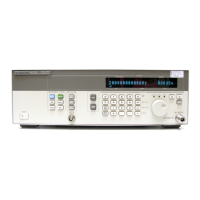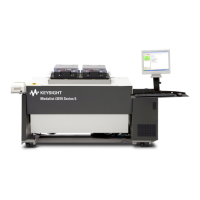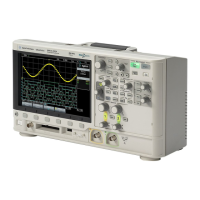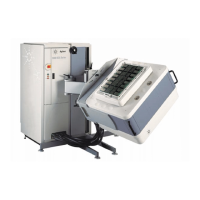326 Agilent InfiniiVision 3000 X-Series Oscilloscopes User's Guide
21 Reference
When using segmented memory, each segment is treated as a separate
waveform. All segments for a channel are saved, then all segments of the
next (higher numbered) channel are saved. This continues until all
displayed channels are saved.
When the oscilloscope is in the Peak Detect acquisition mode, the
minimum and maximum value waveform data points are saved to the file
in separate waveform buffers. The minimum value data points are saved
first; then, the maximum value data points are saved.
BIN data - using
segmented
memory
When saving all segments, each segment has its own waveform header (see
"Binary Header Format" on page 326).
In BIN file format, data are presented as follows:
• Channel 1 data (all segments)
• Channel 2 data (all segments)
• Channel 3 data (all segments)
• Channel 4 data (all segments)
• Digital channel data (all segments)
• Math waveform data (all segments)
When not saving all segments, the number of waveforms is equivalent to
the number of active channels (including math and digital channels, with
up to seven waveforms for each digital pod). When saving all segments,
the number of waveforms is equal to the number of active channels
multiplied by the number of segments acquired.
Binary Data in MATLAB
Binary data from an InfiniiVision oscilloscope can be imported to The
MathWorks MATLAB®. You can download the appropriate MATLAB
functions from the Agilent Technologies web site at
"www.agilent.com/find/3000X- Series- sw".
Agilent provides the .m files, which need to be copied into the work
directory for MATLAB. The default work directory is C:\MATLAB7\work.
Binary Header Format
File Header There is only one file header in a binary file. The file header consists of
the following information.
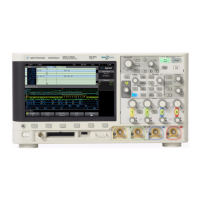
